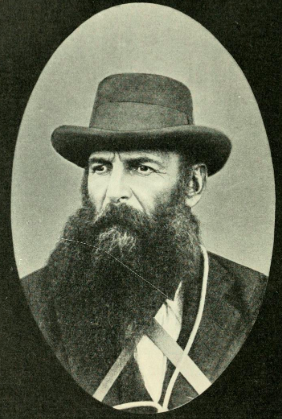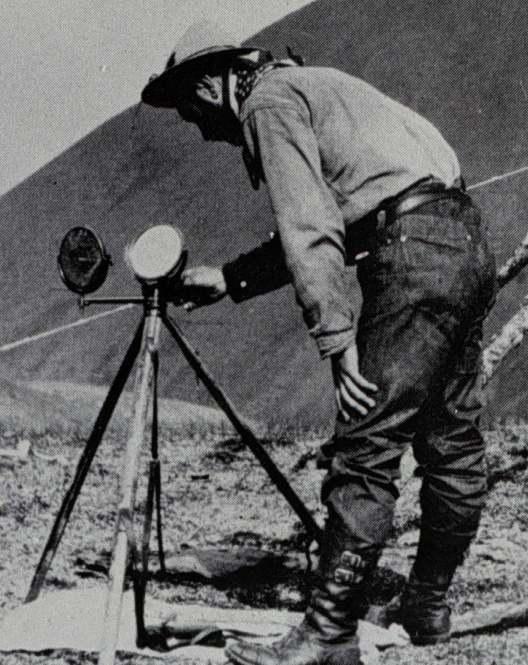|
Battle Of Elands River (1900)
The Battle of Elands River was an engagement of the Second Boer War that took place between 4 and 16 August 1900 in western Transvaal Colony, Transvaal. The battle was fought at Brakfontein Drift near the Elands River (North West), Elands River between a force of 2,000 to 3,000 Boers and a garrison of 500 Australian, Southern Rhodesia, Rhodesian, Canada, Canadian and United Kingdom, British soldiers, which was stationed there to protect a British supply dump that had been established along the route between Mafeking, South Africa, Mafeking and Pretoria. The Boer force, which consisted of several Boer Commando, commandos under the overall leadership of Koos de la Rey, was in desperate need of provisions after earlier fighting had cut it off from its support base. As a result, it was decided to attack the garrison along the Elands River in an effort to capture the supplies located there. Over the course of 13 days, the Elands River supply dump was heavily shelled from several art ... [...More Info...] [...Related Items...] OR: [Wikipedia] [Google] [Baidu] |
Second Boer War
The Second Boer War (, , 11 October 189931 May 1902), also known as the Boer War, Transvaal War, Anglo–Boer War, or South African War, was a conflict fought between the British Empire and the two Boer republics (the South African Republic and Orange Free State) over Britain's influence in Southern Africa. The Witwatersrand Gold Rush caused a large influx of "Uitlander, foreigners" (''Uitlanders'') to the South African Republic (SAR), mostly British from the Cape Colony. As they, for fear of a hostile takeover of the SAR, were permitted to vote only after 14 years of residence, they protested to the British authorities in the Cape. Negotiations failed at the botched Bloemfontein Conference in June 1899. The conflict broke out in October after the British government decided to send 10,000 troops to South Africa. With a delay, this provoked a Boer and British ultimatum, and subsequent Boer Irregular military, irregulars and militia attacks on British colonial settlements in Natal ... [...More Info...] [...Related Items...] OR: [Wikipedia] [Google] [Baidu] |
Flying Column
A flying column is a small, independent, military land unit capable of rapid mobility and usually composed of all arms. It is often an ''ad hoc'' unit, formed during the course of operations. The term is usually, though not necessarily, applied to forces less than the strength of a brigade. As mobility is its primary purpose, a flying column is accompanied by the minimum of equipment. It generally uses suitable fast transport; historically, horses were used, with trucks and helicopters replacing them in modern times. History Flying columns are mentioned by Sun Tzu in his '' Art of War'' in such a fashion that indicates it was not a new concept at the time of his writing. This dates to at least the middle 6th century BC, and possibly the late 8th century BC. The Roman army made good use of the flying columns in the early imperial era. One such commander, the proconsul Germanicus Caesar used flying columns to great effect in the early stages of the campaign against one of Ro ... [...More Info...] [...Related Items...] OR: [Wikipedia] [Google] [Baidu] |
New South Wales Imperial Bushmen
The New South Wales Imperial Bushmen was a mounted regiment, consisting of six rifle squadrons, raised in the New South Wales colony for service during the Second Boer War. The volunteers came from Cootamundra, Gundagai, Wagga Wagga, Young, Hay, Cooma, Moree, Cobar, Tenterfield, and Bourke. Formed as the sixth contingent of Imperial Bushman, with an original strength of 762 men under the command of Lieutenant Colonel Kenneth Mackay, the unit departed Sydney for South Africa on 23 April 1900 on the transport . Between May 1900 and May 1901 it served in Rhodesia as part of the Rhodesian Field Force under Lieutenant General Sir Frederick Carrington and later in West Transvaal, including the capture of Koos de la Rey's convoy and guns at Wildfontein on 24 March 1901. Lieutenant Colonel Haviland Le Mesurier took over as commanding officer in November 1900. The unit departed East London on the transport ''Orient'' and returned to Australia on 17 July 1901. Casualties inc ... [...More Info...] [...Related Items...] OR: [Wikipedia] [Google] [Baidu] |
Heliograph
A heliograph () is a solar telegraph system that signals by flashes of sunlight (generally using Morse code from the 1840s) reflected by a mirror. The flashes are produced by momentarily pivoting the mirror, or by interrupting the beam with a shutter. The heliograph was a simple but effective instrument for instantaneous optical communication over long distances during the late 19th and early 20th centuries. Its main uses were military, surveying and forest protection work. Heliographs were standard issue in the British and Royal Australian armies until the 1960s, and were used by the Pakistani army as late as 1975. Description There were many heliograph types. Most heliographs were variants of the British Army Mance Mark V version (Fig.1). It used a flat round mirror with a small unsilvered spot in the centre. The sender aligned the heliograph to the target by looking at the reflected target in the mirror and moving their head until the target was hidden by the unsilvered spot ... [...More Info...] [...Related Items...] OR: [Wikipedia] [Google] [Baidu] |
Pound Sterling
Sterling (symbol: £; currency code: GBP) is the currency of the United Kingdom and nine of its associated territories. The pound is the main unit of sterling, and the word '' pound'' is also used to refer to the British currency generally, often qualified in international contexts as the British pound or the pound sterling. Sterling is the world's oldest currency in continuous use since its inception. In 2022, it was the fourth-most-traded currency in the foreign exchange market, after the United States dollar, the euro, and the Japanese yen. Together with those three currencies and the renminbi, it forms the basket of currencies that calculate the value of IMF special drawing rights. As of late 2022, sterling is also the fourth most-held reserve currency in global reserves. The Bank of England is the central bank for sterling, issuing its own banknotes and regulating issuance of banknotes by private banks in Scotland and Northern Ireland. Sterling banknotes issu ... [...More Info...] [...Related Items...] OR: [Wikipedia] [Google] [Baidu] |
Zeerust
Zeerust is a commercial town situated in the Ngaka Modiri Molema district of North West Province, South Africa. It lies in the Marico valley, approximately 240 kilometres northwest of Johannesburg. It lies on the N4, the main road link between South Africa and Botswana. There are large cattle ranches in the area, as well as wheat, maize, tobacco and citrus fruit farms. There are also fluorite and chromite mines in the vicinity. Tourism is also a developing industry. History The original name of the farm on which the town was established was Sefatlhane/Sebatlani (meaning ''dusty place'') belonging to Casper Hendrik Coetzee who bought it in 1858. The farm was later renamed Hazenjacht, and after that Hazia/Hazeah. Casper Coetzee contracted Walter Seymore to build a church and a fort on this farm, but Casper died before this was completed. In 1866, the farm then came into the hands of Diederik Jacobus Coetzee, who saw the potential of developing a town on the farm. He measured ... [...More Info...] [...Related Items...] OR: [Wikipedia] [Google] [Baidu] |
Rustenburg
Rustenburg (; , Afrikaans and Dutch language, Dutch: ''City of Rest'') is a town at the foot of the Magaliesberg mountain range. Rustenburg is the most populous city in North West (South African province), North West province, South Africa (549,575 in 2011 and 626,522 in the 2016 census). In 2017, the city's Gross Domestic Product (GDP) reached ZAR 63.8 billion, accounting for 21.1% of the GDP of the North West Province, and 1.28% of the GDP of South Africa. Rustenburg was one of the official host cities of the 2010 FIFA World Cup, being in close proximity to Phokeng, the capital of the Royal Bafokeng Nation, where the Royal Bafokeng Stadium is located. The England national football team also used this as their base camp for the tournament. History Mfecane Before European settlers arrived, the area had been settled by agrarian Setswana-speaking tribes. Rustenburg's population is primarily Tswana people. Partially belonging to the Royal Bafokeng Nation, extensive landowners e ... [...More Info...] [...Related Items...] OR: [Wikipedia] [Google] [Baidu] |
Waypoint
A waypoint is a point or place on a route or line of travel, a stopping point, an intermediate point, or point at which course is changed, the first use of the term tracing to 1880. In modern terms, it most often refers to coordinates which specify one's position on the globe at the end of each "leg" (stage) of a journey. Hence, the term connotes a reference point in physical space, most often associated with navigation. For example, in the case of sea navigation, a waypoint could mark the longitudinal and latitudinal coordinate or a GPS point in open water, a location near a known mapped shoal or other entity in a body of water, a point a fixed distance off of a geographical entity such as a lighthouse or harbour entrance, etc. In air navigation, waypoints most often consist of a series of abstract GPS points that create artificial airways—"highways in the sky"—created specifically for purposes of air navigation that have no clear connection to features of the real world. ... [...More Info...] [...Related Items...] OR: [Wikipedia] [Google] [Baidu] |
Swartruggens
Swartruggens is a small farming town in North West Province, South Africa that was established in 1875. Location The town is located by the Elands River, 69 km east of the town of Zeerust, 56 km west of the city of Rustenburg Rustenburg (; , Afrikaans and Dutch language, Dutch: ''City of Rest'') is a town at the foot of the Magaliesberg mountain range. Rustenburg is the most populous city in North West (South African province), North West province, South Africa (549 ... and 34 km north-west of Koster. It is on the N4 road. It takes its name 'Swartruggens' from a series of hills there, formerly known as ''Zwartruggens'', the Dutch name for 'black ridges'. History The town of Swartruggens was founded in 1875 on the farm Brakfontein. After the Siege of Mafeking, during the Second Anglo-Boer War, one of the supply depots was established by Robert Baden-Powell in Swartruggens, as he moved to Pretoria. A cemetery for British war dead from the Second Angl ... [...More Info...] [...Related Items...] OR: [Wikipedia] [Google] [Baidu] |
Guerrilla Warfare
Guerrilla warfare is a form of unconventional warfare in which small groups of irregular military, such as rebels, partisans, paramilitary personnel or armed civilians, which may include recruited children, use ambushes, sabotage, terrorism, raids, petty warfare or hit-and-run tactics in a rebellion, in a violent conflict, in a war or in a civil war to fight against regular military, police or rival insurgent forces. Although the term "guerrilla warfare" was coined in the context of the Peninsular War in the 19th century, the tactical methods of guerrilla warfare have long been in use. In the 6th century BC, Sun Tzu proposed the use of guerrilla-style tactics in '' The Art of War''. The 3rd century BC Roman general Quintus Fabius Maximus Verrucosus is also credited with inventing many of the tactics of guerrilla warfare through what is today called the Fabian strategy, and in China Peng Yue is also often regarded as the inventor of guerrilla warfare. Guerrilla wa ... [...More Info...] [...Related Items...] OR: [Wikipedia] [Google] [Baidu] |
Parole
Parole, also known as provisional release, supervised release, or being on paper, is a form of early release of a prisoner, prison inmate where the prisoner agrees to abide by behavioral conditions, including checking-in with their designated parole officers, or else they may be rearrested and returned to prison. Originating from the French word ('speech, spoken words' but also 'promise'), the term became associated during the Middle Ages with the release of prisoners who gave their word. This differs greatly from pardon, amnesty or commutation of sentence in that parolees are still considered to be serving their sentences, and may be returned to prison if they violate the conditions of their parole. It is similar to probation, the key difference being that parole takes place after a prison sentence, while probation can be granted in lieu of a prison sentence. Modern development Alexander Maconochie (penal reformer), Alexander Maconochie, a Scottish geographer and captain i ... [...More Info...] [...Related Items...] OR: [Wikipedia] [Google] [Baidu] |
History Of Australia
The history of Australia is the history of the land and peoples which comprise the Commonwealth of Australia. The modern nation came into existence on 1 January 1901 as a federation of former British colonies. The human history of Australia, however, commences with the arrival of the first ancestors of Aboriginal Australians from Maritime Southeast Asia between 50,000 and 65,000 years ago, and continues to the present day multicultural democracy. Aboriginal Australians settled throughout continental Australia and many nearby islands. The Aboriginal art, artistic, Aboriginal music, musical and Dreamtime, spiritual traditions they established are among the longest surviving in human history. The ancestors of today's ethnically and culturally distinct Torres Strait Islanders arrived from what is now Papua New Guinea around 2,500 years ago, and settled the islands on the northern tip of the Australian landmass. Dutch navigators explored the western and southern coasts in the 17t ... [...More Info...] [...Related Items...] OR: [Wikipedia] [Google] [Baidu] |








